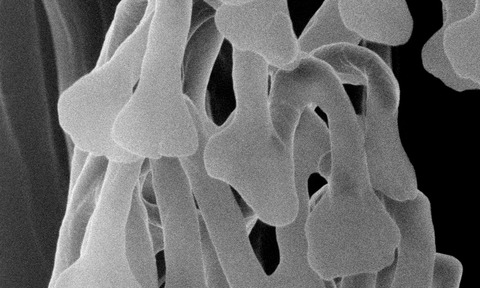
Researchers have examined the climbing skills of geckos and spiders using the ORION helium ion microscope from Carl Zeiss.
Scientists from Lewis and Clark College, working collaboratively with the Joint School of Nanoscience and Nanoengineering (JSNN) in the USA have examined the climbing skills of geckos and spiders using the ORION helium ion microscope from Carl Zeiss.
High resolution images displaying unique definition and detail rendition reveal even the finest structures on the feet of these animals.
This imaging advances the understanding of how the masterful climbing skills of these creatures are attributed to adhesive forces or, in other words, intermolecular attractions.
The secret lies in the fine structure of the tiny hairs, or “setae,” that cover the undersides of the feet.
The spatula-shaped tips of the hairs allow the creatures to make a vast number of contacts on the surface.
The simple adhesive force enables the gecko or spider to carry many times its own weight when climbing upside down.
Until now, it has been extremely difficult to obtain images of the tiny, delicate hairs.
Electron microscopes generate an electrostatic charge on the surface of practically all biological specimens.
This impairs the image quality, which is why research scientists frequently cover biological specimens with a thin gold coating during preparation.
This, in turn, masks the fine structures of the gecko and spider hairs.
Helium ion microscopy offers a simple but effective solution to this problem; static charge is neutralised in a very straightforward manner, allowing the specimen to be imaged in its natural state.




